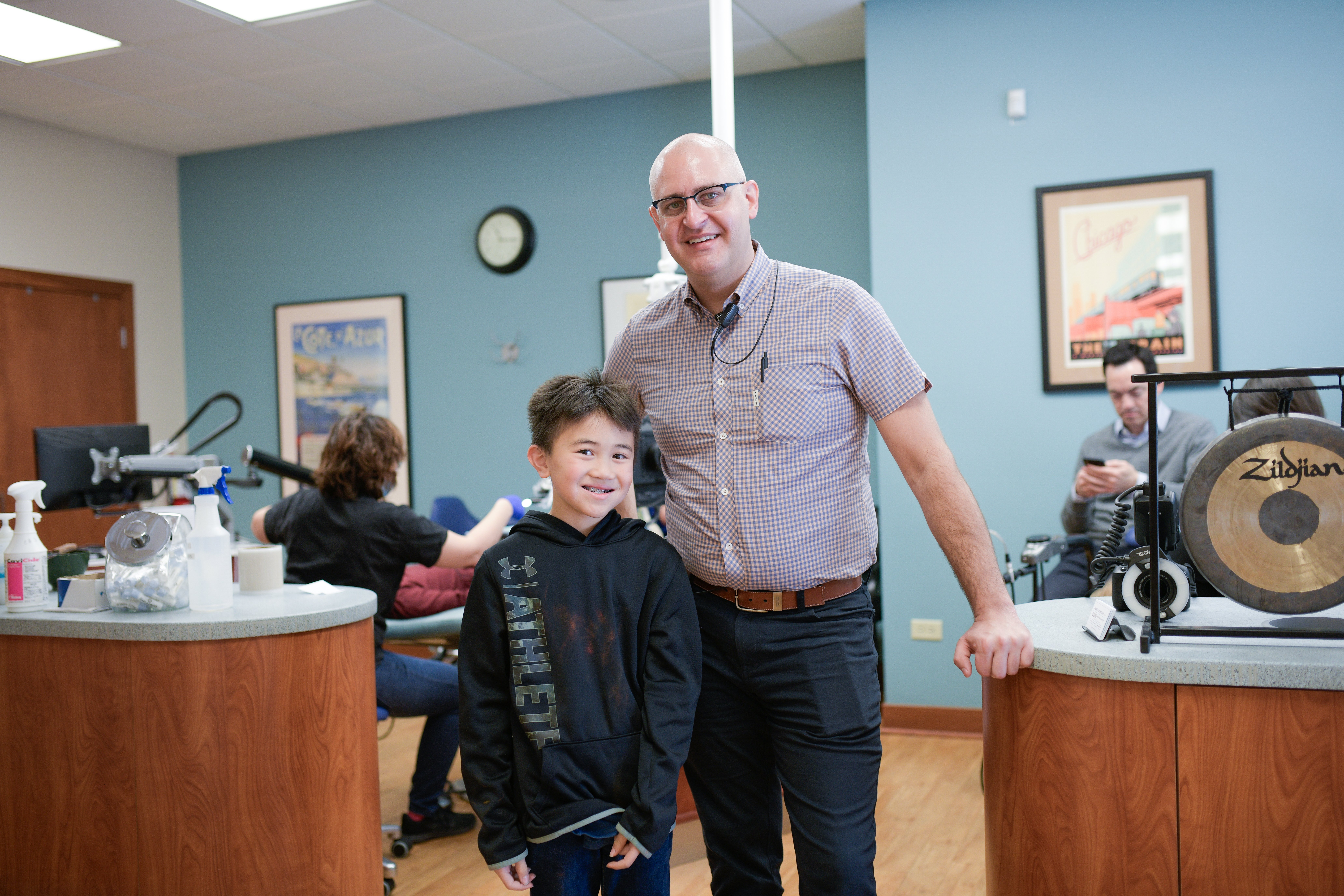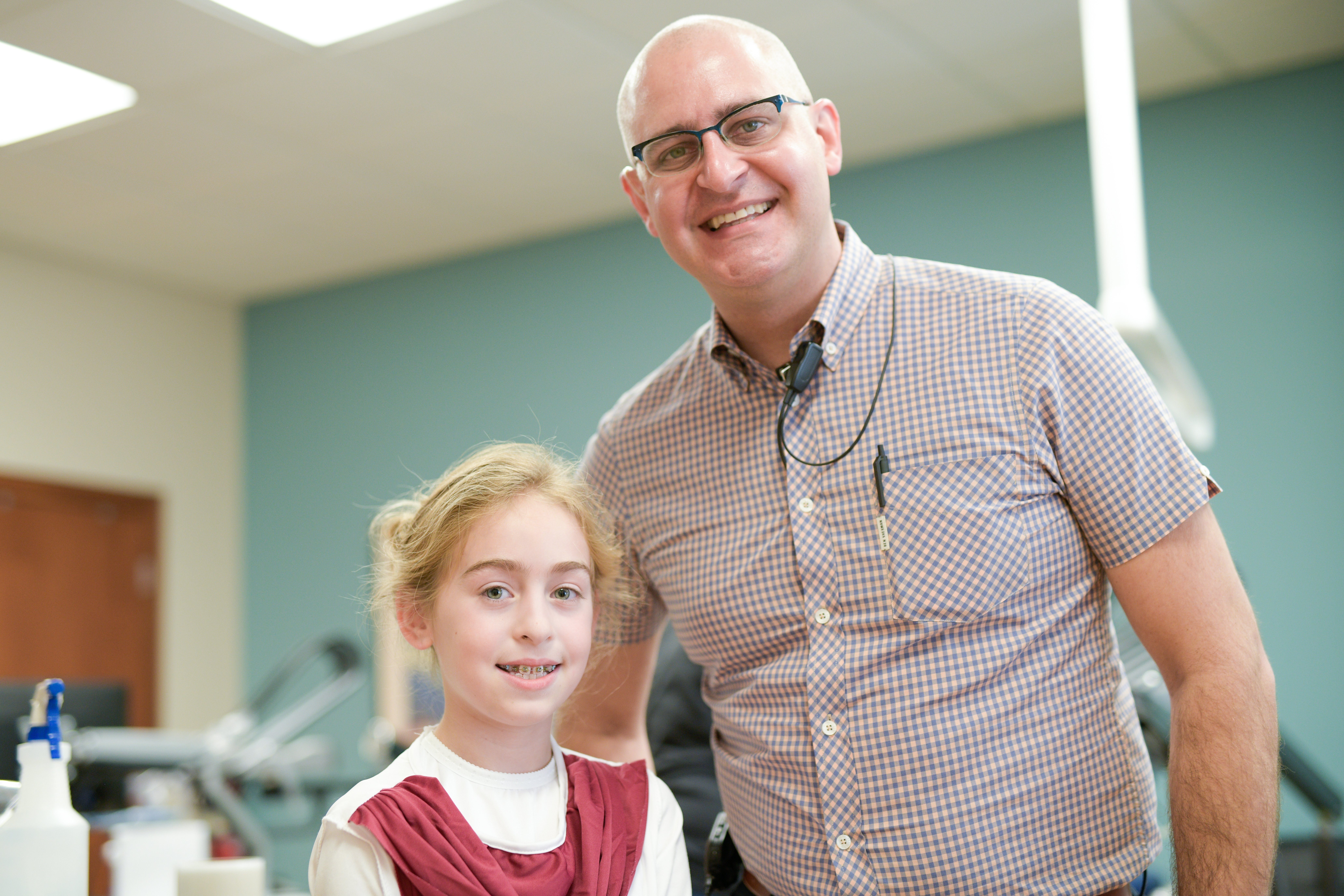When it comes to treating our youngest patients, there are special considerations we take as a practice. One of these treatments is called two-phase treatment, and today, our team at Windy City Orthodontics will explain: What is phase one of orthodontic treatment?
The Full Process
Before breaking down the first portion of this treatment, let’s cover what the entire plan looks like. The necessity for two-phase treatment varies from patient to patient and their individual cases, but is specifically for children.
- Phase One (Early Treatment or Interceptive Phase): This phase is usually between ages seven and ten when a child still has a combination of baby teeth and permanent teeth. The primary goal of this stage is to address specific orthodontic issues, like severe crowding, crossbites, or protruding front teeth—all of which may result in long-term damage to the permanent teeth if not addressed in a timely manner and are easiest to address in a growing child.
- Phase Two (Comprehensive Treatment): This will occur once most or all of the baby teeth have been lost, typically around ages eleven to fourteen. It focuses on the final alignment of permanent teeth and ensuring the upper and lower jaws are aligned. Comprehensive treatment usually involves the use of full braces or other orthodontic appliances to fine-tune tooth and bit positions.
Examining Phase One Interceptive Treatment
Let’s take a look at some of the most common reasons for phase one treatment in our youngest patients:
- Severe Crowding: Early treatment is generally recommended when there is significant crowding of the teeth. When we address it early, we can create more space for permanent teeth to erupt properly.
- Crossbites: Crossbites occur when the upper and lower teeth don’t align properly, and can be corrected by guiding the jaw’s growth and avoiding more severe misalignments as time goes on.
- Protruding Front Teeth: Children who suffer from prominent front teeth can benefit from this treatment, which addresses protrusion and prevents potential injuries to the teeth.
- Dental and Skeletal Discrepancies: Phase one treatment is an ideal solution when there are significant discrepancies between the size of the upper and lower jaws or other skeletal issues.
- Habits and Other Oral Health Concerns: Orthodontic problems caused by habits such as thumb-sucking or tongue-thrusting can be addressed during phase one. Additionally, early treatment may help manage issues related to oral health, such as difficulty chewing or speaking.
- Space Maintenance: Phase one treatment can involve the use of appliances to maintain or create space for permanent teeth, especially when there is a risk of impaction or other eruption problems.
- Improving Facial Esthetics: Addressing orthodontic issues early can contribute to a more harmonious development of the face and profile.
- Functional Issues: Problems with chewing, speech, and jaw function may be addressed during this process.
FAQs
We totally understand that you might have further questions about this method, and we can cover some of those common inquiries here!
Q: How long does phase one treatment last?
This can vary quite a bit based on the child and the severity of the issues being faced. Typically, it will several months to a few years.
Q: Are there risks or side effects associated with this manner of treatment?
As with any medical or dental procedure, there will always be minor risks and side effects. Our team will give a thorough explanation of this topic before starting treatment and discuss the factors that are crucial for success, including patient cooperation and proper appliance wear.
Q: How often are follow-up appointments needed during this process?
Any orthodontic treatment requires regular check-ins with Dr. Pakravan. In terms of this phase of treatment, you’ll typically attend appointments every month or two to monitor progress, make adjustments to appliances, and address acute or ongoing concerns. It is absolutely essential to be present for these appointments.
Q: Does phase one treatment avoid the need for braces later on?
Probably not. Phase one treatment is foundational for final alignment with braces, as it conditions the child’s teeth and mouth for this manner of appliance. Using it in combination with that final stage of treatment is key.
Q: Will my insurance cover phase one treatment?
This will vary from provider to provider, as well as coverage plans. You should always check with your provider and discuss payment options with our office.
Q: Does every child need this treatment?
No. This is always going to be recommended based on individual needs, but the great majority of children can wait until the permanent teeth have all erupted. Some children may only need comprehensive treatment in their adolescent years, but early intervention is vital in certain cases or simply preferable in others.
Setting the Scene
We hope you now have a better understanding of what phase one treatment looks like for pediatric patients, both independently and in conjunction with future treatment. This is a perfectly common course of treatment for many kids, and our team is well-versed in it. For further questions or to schedule a free consultation, either of our Chicago offices can be reached at (773) 207-3305.


